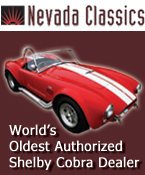
06-24-2011, 10:31 PM
|
 |
CC Member

|
|
|
Join Date: Sep 2009
Location: Camarillo,
CA
Cobra Make, Engine: SPF #2608, Roush 427SR T-W
Posts: 911
|
|

 Not Ranked
Not Ranked
 Factors that Determine Octane Requirement
Factors that Determine Octane Requirement
All of these are general statements that apply to "normal" engines. The octane requirement is the minimum octane of the gasoline that will not cause engine knock. Most of this information is taken from the American Petroleum Institute.
Octane requirements are lowest in a new engine by as much as 3-6 octane. As the engine gets broken in, sometimes as much as 15,000 miles later, the octane requirement will stabilize to the manufacturer's octane recommendations. As you drive your brand new car off the lot, it may run fine on 81 to 84 octane gasoline. As the engine ages, the octane requirement will increase until it levels out at 87 (assuming 87 is the manufacture's fuel recommendation).
Hotter the ambient air and coolant, the greater the octane requirement.
Higher the altitude above sea level, the lower octane requirement.
Lower the humidity the greater the octane requirement. Low desert not looking good.
Octane requirement increases with advancing spark timing and increased engine compression ratio.
Heavier engine load (WOT) may require higher octane requirements.
Malfunctions of emission control systems can affect octane requirements.
Computer-controlled engines can adjust spark timing and air-fuel ratio based on knock sensors, ambient air temperature, barometric pressure and load requirements.
Many new engines recommend premium fuel for optimum performance in terms of gas mileage and emissions. In some cases, the engine performance is essentially the same with regular or premium fuel use. If the engine is turbocharged or has high-performance design characteristics, use of regular fuel will cause significant performance loss and possibly damage.
I'm sure there are more octane factors not mentioned here.

|


